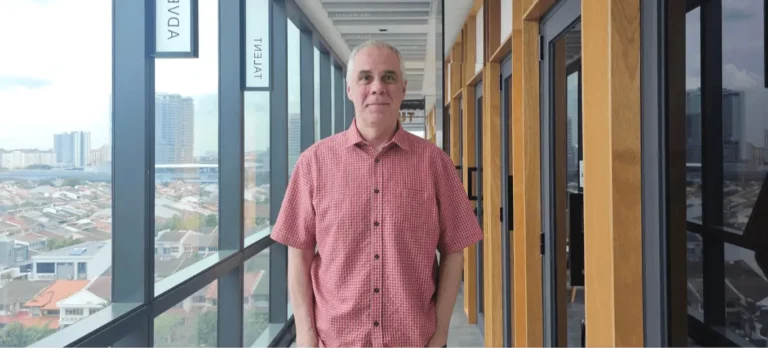From Volume to Value: How Tourism Taxes Can Support High-Yield Strategies
The Rising Trend of Tourism Taxes
Tourism taxes are an increasingly common feature in travel destinations worldwide. Bali (Indonesia), Japan, the UK, the US, Malaysia, Bhutan, New Zealand, France and Germany have implemented some form of tourist levy. Stated reasons vary, ranging from raising funds for infrastructure improvement to managing tourism flows. Thailand’s government is preparing to implement a THB300 tourism tax via the Thailand Digital Arrival Card before the end of 2025. This move comes as the country nears pre-pandemic tourism levels, aiming to attract over 40 million visitors for the first time.Significant Revenue Generation
Speaking on Singapore’s CNA 938, Gary Bowerman, Partner and Co-Founder of High-Yield Tourism, explained that Thailand’s tourism tax is primarily a revenue-generating initiative rather than a measure to curb over-tourism. “If you have 40 million visitors each year and charge them THB 300, you’re going to make a lot of revenue,” he stated. The Thai government has indicated that the funds may support insurance and healthcare services for visitors, but the specifics remain unconfirmed. Gary noted that a tourism tax has been discussed in Thailand since 2019, but its introduction was twice cancelled. Other destinations, like Japan and Venice, are reassessing their tourism pricing. Japan plans to increase its JPY 1,000 departure tax to fund measures addressing over-tourism, while Venice has increased the payment dates for its EUR 5 tax during peak seasons.Conservation & Infrastructure
New Zealand serves as a benchmark for how tourism taxes can be reinvested into national infrastructure and conservation. The country introduced an NZD 35 tax in 2019, increasing it to NZD 100 in 2024. This revenue is used to finance environmental preservation projects and tourism services in decentralized areas. Gary emphasized that tourism taxes are here to stay, with travelers likely to encounter various forms of taxation. These may be applied via online visa applications, air tickets, or hotel stays. “The good old days of cheap travel in the 2010s are probably gone,” he remarked.Visitor Fees & High-Yield Tourism
As tourism taxes proliferate, high-yield tourism strategies can help destinations maximize benefits while minimizing negative impacts. High-yield tourism focuses on attracting travelers who spend more and engage in meaningful experiences, rather than simply increasing visitor numbers. By prioritizing high-yield visitors, destinations can reduce strains on infrastructure, protect natural and cultural heritage, and enhance overall economic value. Shifting from a volume-based tourism model to one centred on value and sustainability ensures that tourism remains a long-term asset rather than a burden. If tourism taxes are reinvested into initiatives that support high-yield tourism – such as improving local experiences, enhancing sustainability and funding conservation projects – they can effectively contribute to a more resilient and prosperous visitor economy. A potential future option might be dynamic tourism levies integrated into a high-yield strategy. These, however, require advanced technological capacity for payment collection.Balancing Revenues & Tourism Experiences
While tourism taxes generate large revenues, their impact on visitor behavior remains unproven. Countries must balance taxation and maintaining a competitive travel environment. Some destinations offset these levies with incentives, like Japan’s tax-free tourist shopping. Ultimately, the effectiveness of tourism taxes depends on utilization of the collected revenue. If strategically invested, they can enhance visitor experiences and strengthen social structures. However, tourism taxes may deter some travelers if viewed merely as an additional cost without tangible benefits.more insights

The Tourism Outlook between Australia, South East Asia, China and India
March 10, 2025
High-Yield Tourism Opportunities Between Australia, South East Asia, China & India The tourism landscape between Australia, South-East Asia, China, and India is evolving, driven by

Gary Bowerman on How IVT Could Change Tourism
February 19, 2025
Gary Bowerman on How IVT Could Change Tourism In a recent interview on BFM 89.9’s Enterprise Explores, Gary Bowerman, co-founder of High-Yield Tourism, discussed the

Gary Bowerman on the Future of Smart Travel on TaiwanPlus
February 15, 2025
Gary Bowerman on the Future of Smart Travel on TaiwanPlus In his appearance on TaiwanPlus’s Connected, Gary Bowerman, co-founder of High-Yield Tourism, shared valuable insights
High-Yield Tourism
68 Circular Road #02-01
Singapore 049422
Email: hello@highyieldtourism.com
Sign-up to receive updates about High-Yield Tourism, industry news, and reports.

